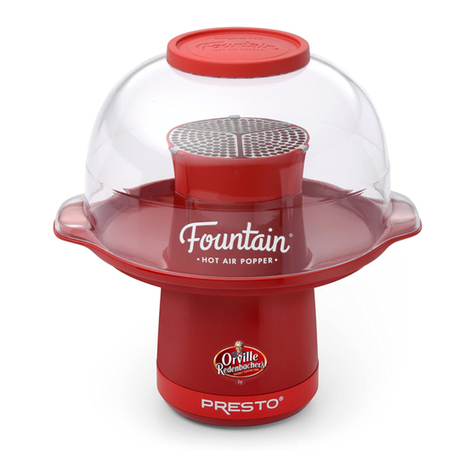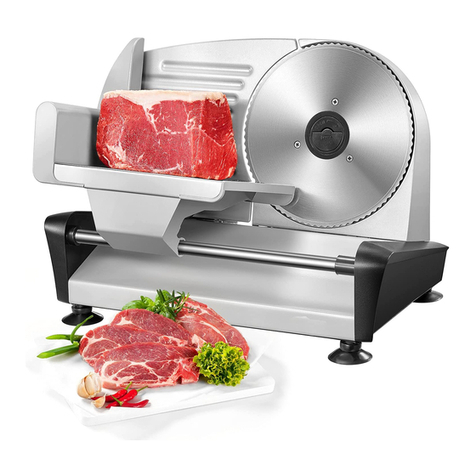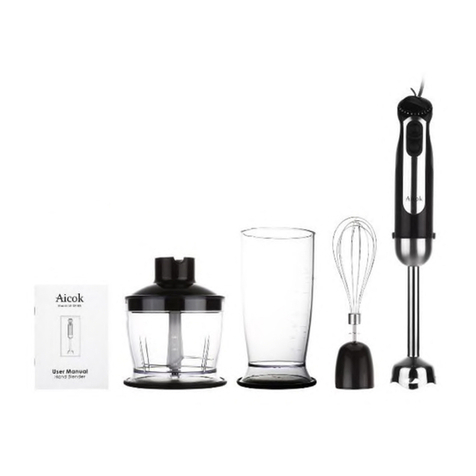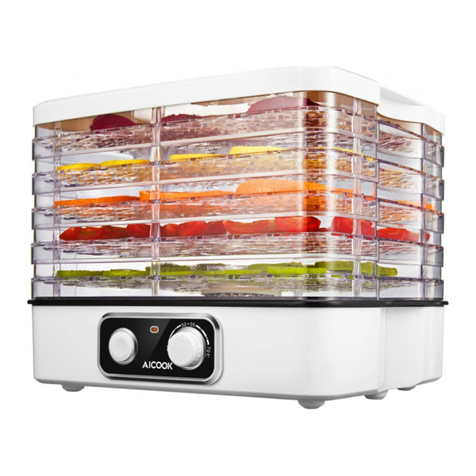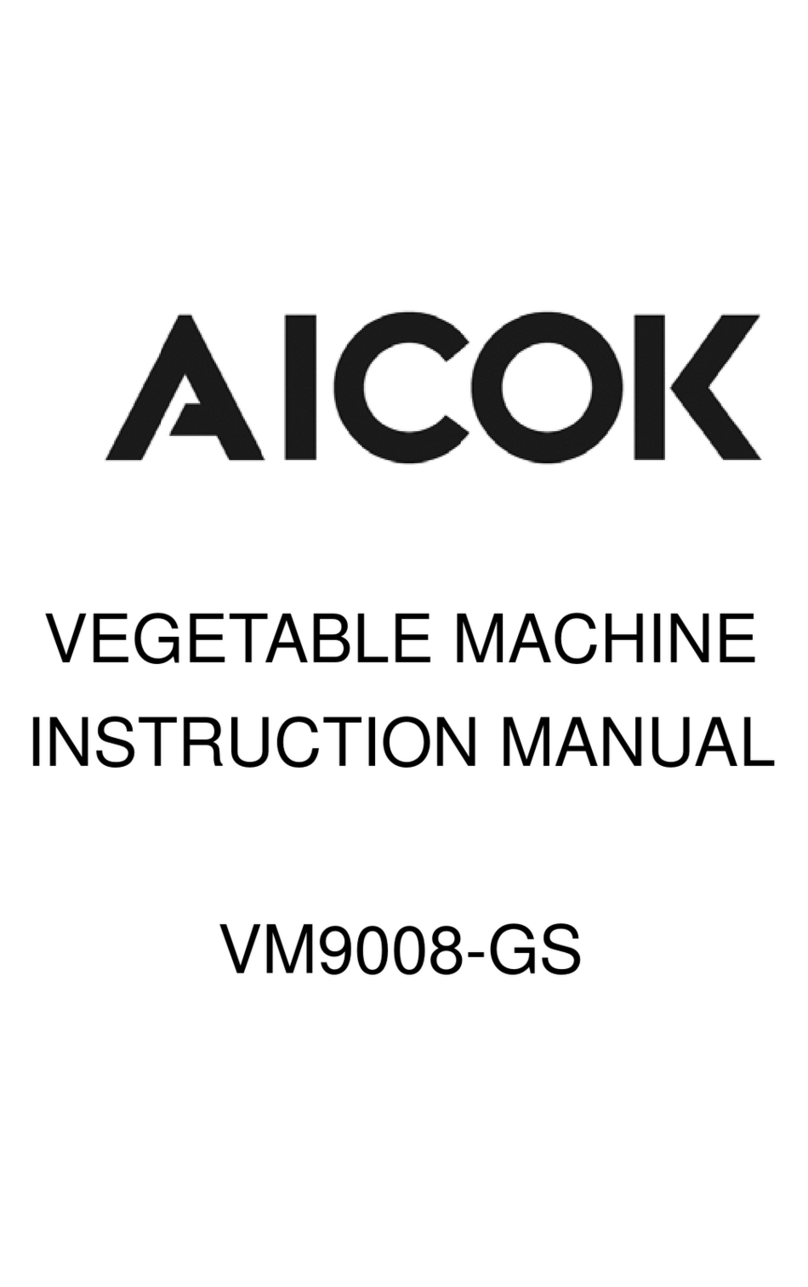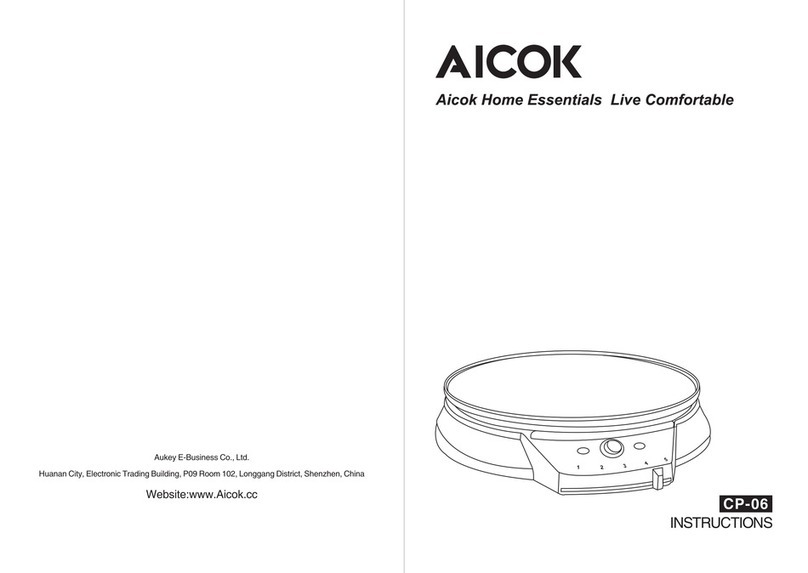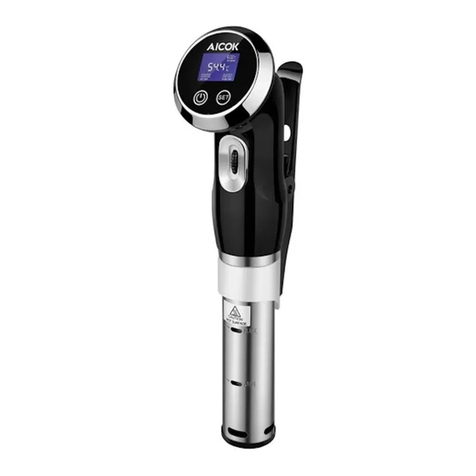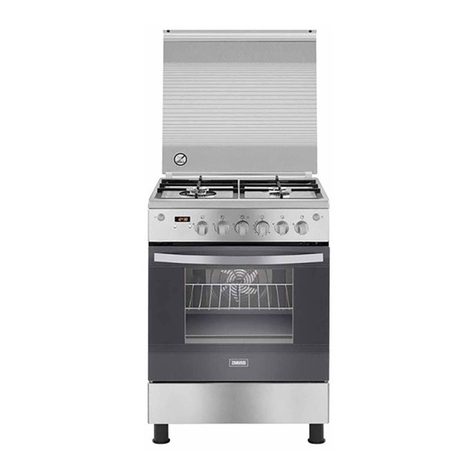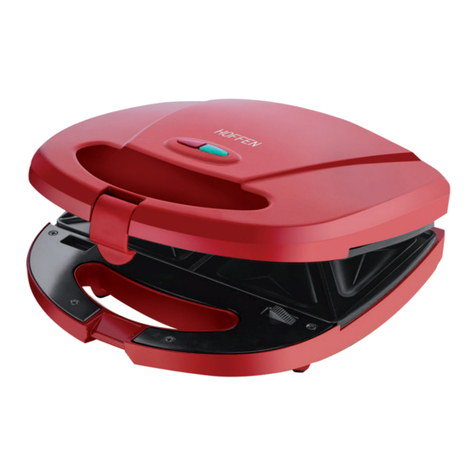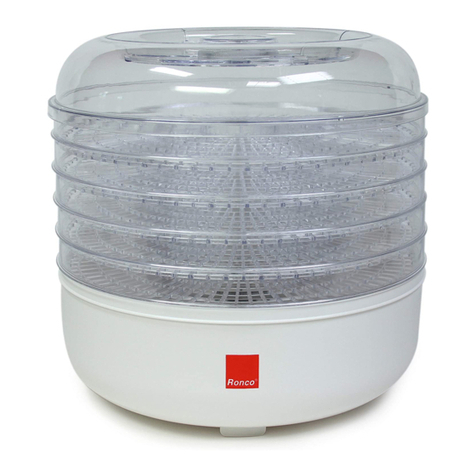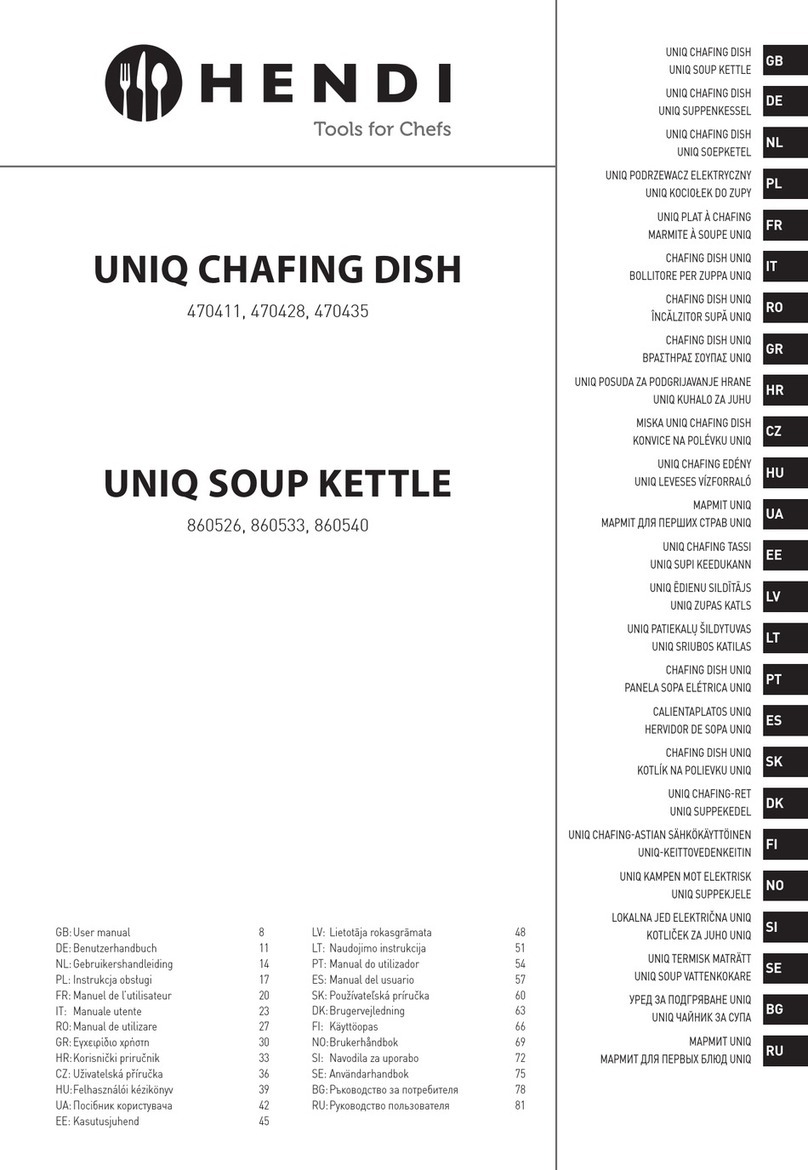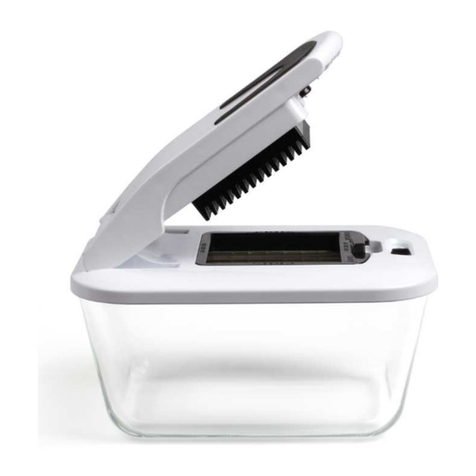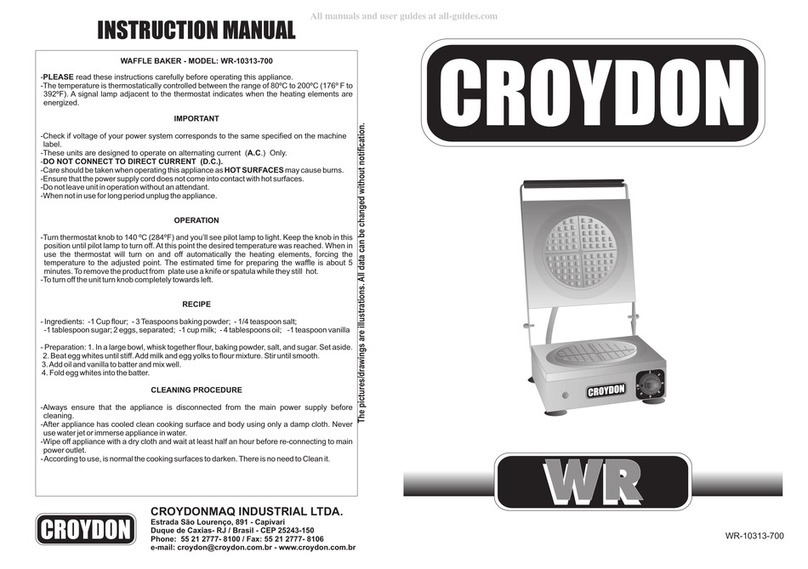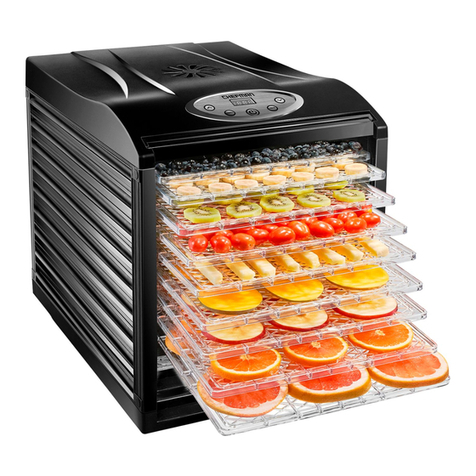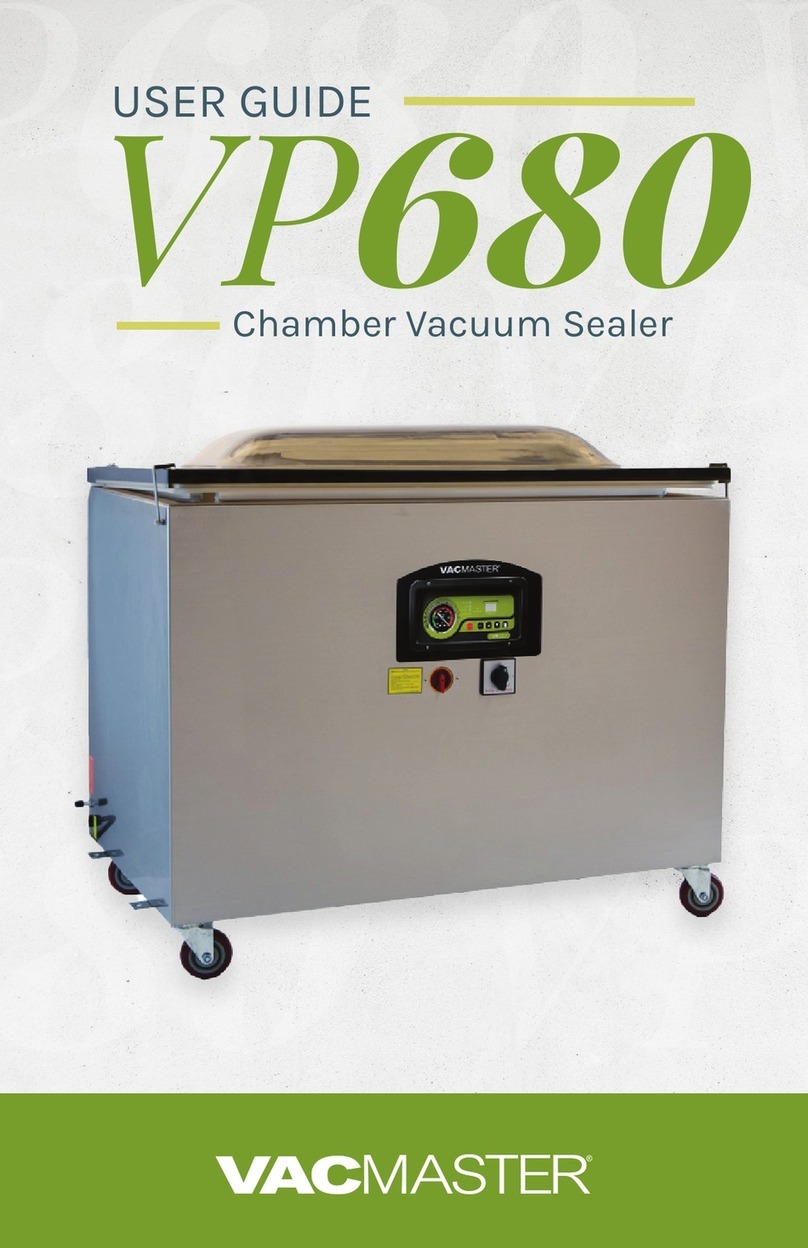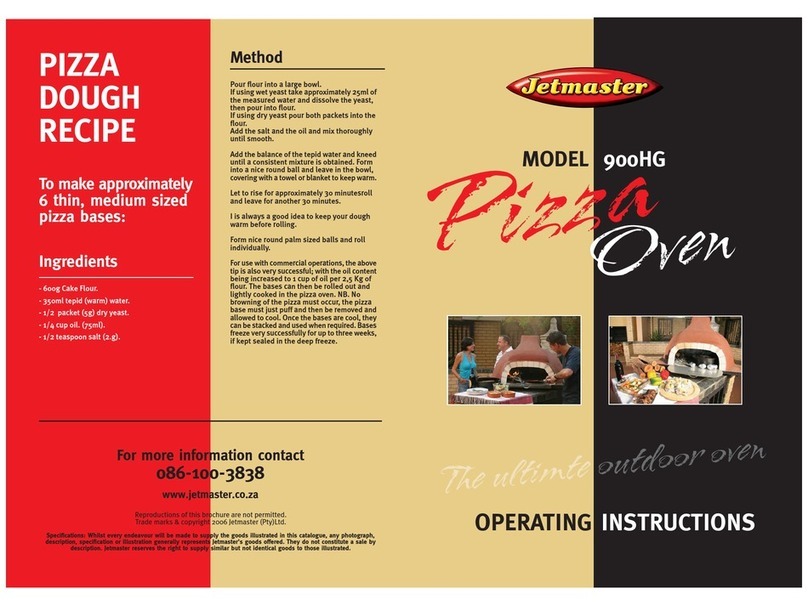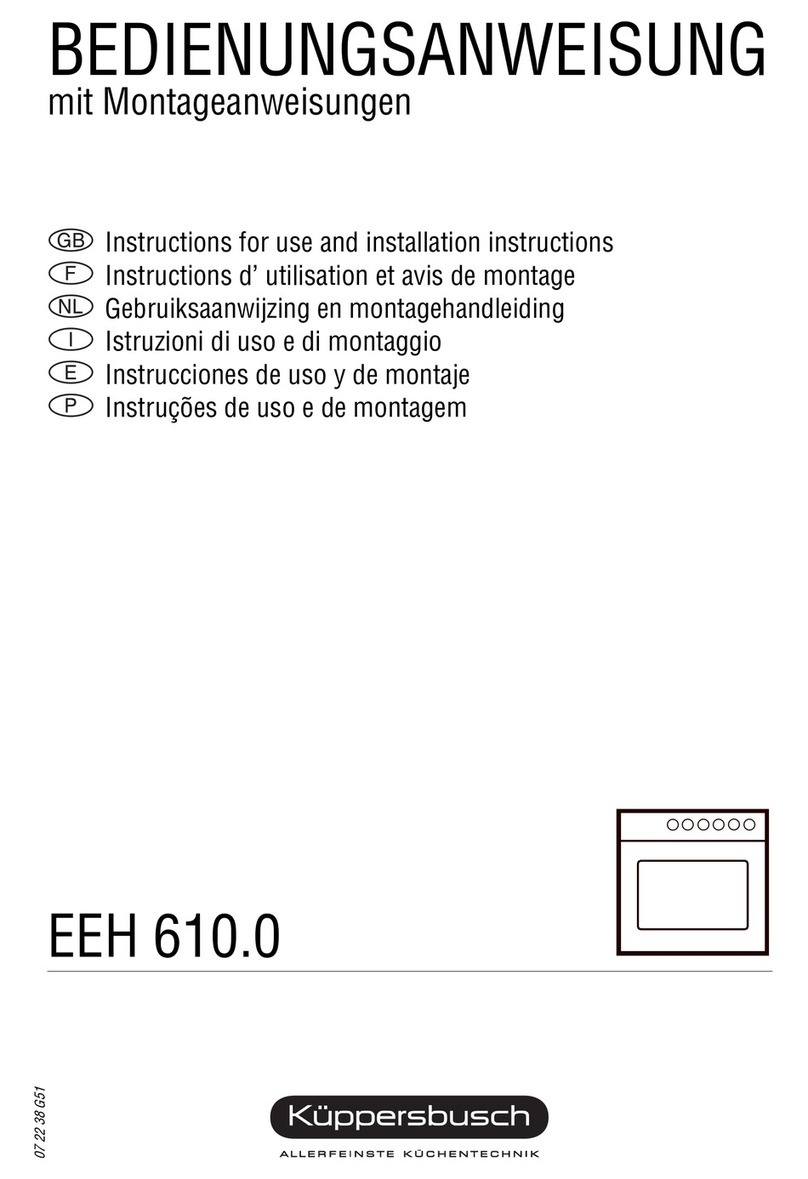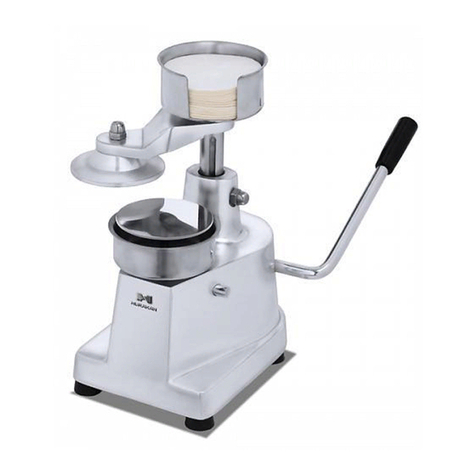Page 7of 8
All poultry meat shall be cooked beforehand prior to drying, and steam or baking is the
best way. Drying time is about 2-8 hours till all the moisture evaporates.
3. Fish:
It is recommended to steam or bake before drying (bake in the oven for 20 minutes at
200°C). Drying time is about 2-8 hours till all the moisture evaporates.
D. Vanilla and so on
Rinse with water and spin dry excessive moisture and remove stale leaves. Spread the
vanilla in the hopper in a loose way. Drying time is determined by different size and kind,
and it is about 2-6 hours.
E. Bread and so on
Cut it into small slices without crust. Spread them in the hopper in a loose way. Drying
time is about 30 minutes -2 hours.
F. Nut:
Stone and rinse with warm water. Spread them on the hopper in a loose way. The nuts can
only be stored after they are cooled. There's oil content inside the nuts may produce some
rotting smell, so they shall be kept fresh in the refrigerator. When they are needed, take them
out and put in normal room temperature. Drying time is about 18-26 hours.
Chapter VI Cleaning and Maintenance
1. Prior to cleaning, cut off the power source for the electric dryer.
2. After the food is dried, clean the shelves with warm water with aid of soft cotton cloth, and
clean them with detergent for cleaning utensil, and wipe them off.
3. Do not clean the electric dryer with water current, or clean the bottom seat in the water. Clean
the surface of the dirty bottom seat with wet cloth.
4. Do not use detergent made of grinding material, metal brush or organic solvent.
5. Put the cleaned product in a cool and ventilated environment.
Chapter VII Trouble-shooting




